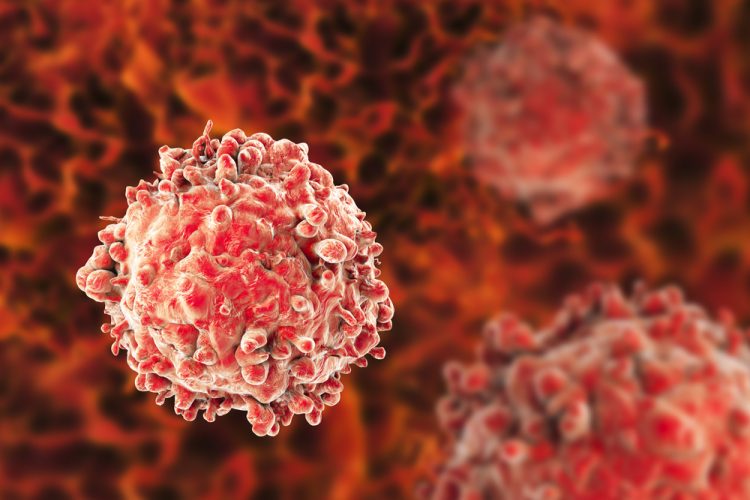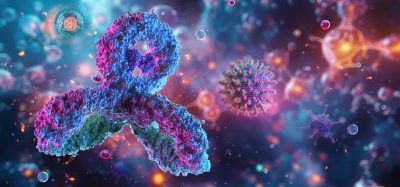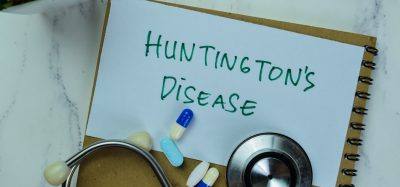The power of combinations in blood cancers
Posted: 6 November 2023 | Anas Younes, AstraZeneca, Haematology Oncology R&D | No comments yet
Haematology research is a cradle of innovation, with many firsts in therapeutic approaches utilising the latest technology for the treatment of blood cancers. Anas Younes, Senior Vice President, Head of Haematology Oncology Research and Development at AstraZeneca, envisions a future where potential cures are within reach for more blood cancers by expanding upon the successes of current therapies, developing a pipeline of novel mechanisms and identifying innovative combinations.

Advances in research and development and the utilisation of combination treatment strategies are revolutionising the haematology care landscape, but more must be done to address patients’ individual needs. There are more than 150 identified types of leukaemia’s, lymphomas and myelomas1 and given that each blood cancer is unique, their heterogenous nature makes them some of the most challenging cancers to treat.2
To redefine standards of care in haematology and close gaps to improve patients’ lives, we must work to achieve the following:
- Develop a deeper understanding of these diseases’ biology to identify new vulnerabilities that can be explored therapeutically
- Rapidly advance the development of combination regimens, incorporating drugs with no overlapping mechanisms of actions to address tumour heterogeneity3
- Introduce treatments early in the course of disease to improve curative potential.
Advances in disease understanding and combination strategies in haematology
We now know that blood cancers are characterised by molecular and phenotypic heterogeneity.2 It is this complexity that necessitates powerful, targeted combination therapies.
To bring us closer to curing cancer, a combination of effective drugs with non-overlapping mechanisms of action is required. 3 This concept was established more than three decades ago in diffuse large cell lymphoma (DLBCL) and Hodgkin lymphoma, when they became among the first cancers to be cured with the chemotherapy combinations of CHOP (Cyclophosphamide, Hydroxydaunorubicin, Oncovin and Prednisone) and ABVD (Adriamycin, Bleomycin, Vinblastine and DTIC), respectively.4, 5
More recently, new combination regimens have emerged that incorporate targeted therapies to treat a variety of blood cancers, including multiple myeloma (MM), chronic lymphocytic leukaemia (CLL) and acute myelogenous leukaemia (AML).6 In all these examples, an effective backbone drug was first developed, before adding one or more drugs to establish the new regimens. These regimens frequently include one or two small molecule inhibitors and immuno-oncology (IO) therapies, such as monoclonal antibodies and T-cell engagers.
Next-generation modalities and combinations
As research further progresses beyond chemotherapy and small-molecule inhibitors, the emergence of next-generation modalities is unlocking new ways to target cancer. This includes developments with innovative IO agents, such as bispecific antibodies, T-cell engagers and cell therapies, and modalities that directly kill cancer cells, such as antibody drug conjugates (ADCs) and epigenetic therapies.
These options are creating opportunities to develop more sophisticated, novel combination regimens for patients. For example, combining IO agents with ADCs to mount a two-pronged attack against cancer by activating an anti-cancer immune response and directly killing cancer cells may drive stronger and more durable responses in the clinic.7 The availability of these novel modalities provides more options to tailor combinations based on an individual patient’s disease characteristics, which is critical in haematology since all blood cancers are different.2
Early intervention and interception strategies
While CHOP and ABVD demonstrated the power of combination regimens to cure some cancers, even in the most advanced stages; introducing regimens early in the course of disease is likely to be more effective. 8 Many types of blood cancers currently cannot be cured with therapy, leading to the use of a “watch and wait” strategy and delays in treatment initiation.9 This delayed treatment is implemented in patients with follicular lymphoma, CLL, mantle cell lymphoma and multiple myeloma, among others.
As we build innovative regimens using more effective drugs than traditional chemotherapy, it will be imperative to rapidly test the curative potential earlier in the disease course. The challenge with this early intervention approach is the need to follow up with patients for a long period of time. To be successful, surrogate or intermediate endpoints will need to be established to accelerate the development of the new regimens. At AstraZeneca and beyond we are exploring the use of cell-free DNA (cfDNA) methods to assess minimal residual disease as a possible intermediate endpoint across several disease types.
Ultimately, novel early detection methods will need to detect cancer cells before they become clinically visible by imaging studies, and preferably in a premalignant state.10 For example, current deep sequencing methods can detect clonal haematopoiesis of indeterminate potential (CHIP), which may predispose to AML.11 Similarly, modern flow cytometry analysis of peripheral blood samples can detect monoclonal B-cell lymphocytosis (MBL), which may predispose patients to the development of CLL.12 Intercepting these cells with precise, effective and tolerable medicines may pre-emptively prevent the development of cancer or delay its onset by several years.12 These approaches will require early detection methods that are specific and sensitive, in addition to predictive models to select patients at the highest risk of developing cancers before therapeutic intervention.
Driving cutting-edge research to identify cures
We’re in an era of cancer research that is pushing the boundaries of science and moving the needle in treating more haematological malignancies to increase the chance of cures. At AstraZeneca, we are researching multiple innovative combination therapies and harnessing next-generation technologies that could lead to earlier treatment and improved care for as many patients as possible.
This article was written and developed by AstraZeneca.
About the author
 Anas Younes
Anas Younes
Haematology Oncology R&D, AstraZeneca
As a clinician-scientist, he has spent more than 25 years caring for patients with lymphoma. Before joining AstraZeneca, he served as the Chief of the Lymphoma Service at Memorial Sloan Kettering Cancer Center (MSKCC) and led a laboratory focused on drug development for patients with lymphoid malignancies. Prior to his work with MSKCC, he spent 20 years directing clinical and translational research in the Department of Lymphoma and Myeloma at the University of Texas MD Anderson Cancer Center.
Throughout his career, he has published more than 300 papers in peer-reviewed journals, served as the principal investigator of more than 60 clinical trials and led two independent National Cancer Institute–funded Specialized Programs of Research Excellence at MDACC and MSKCC. He holds a medical degree from the Damascus University School of Medicine and has completed residencies in pathology at the College of Medicine and Life Sciences at the University of Toledo in Ohio, in internal medicine at SUNY Downstate College of Medicine, in New York, and a fellowship in hematology/oncology at MSKCC.
References
- Blood Cancer UK. https://join-bloodcancer.org.uk/. Accessed October 2023.
- Desai RH, Zandvakili N, Bohlander SK. Dissecting the Genetic and Non-Genetic Heterogeneity of Acute Myeloid Leukemia Using Next-Generation Sequencing and In Vivo Models. Cancers (Basel). 2022;14(9):2182. Published 2022 Apr 27. doi:10.3390/cancers14092182
- Fisher R, et al. Cancer heterogeneity: Implications for Targeted Therapeutics. Br J Cancer. (2013); 108(3): 479-485.
- American Society of Hematology. Milestones in Hodgkin Lymphoma. Available at: https://www.hematology.org/about/history/50-years/milestones-hodgkin-lymphoma. Accessed October 2023.
- Falzone L, Salomone S, Libra M. Evolution of Cancer Pharmacological Treatments at the Turn of the Third Millennium. Front Pharmacol. 2018;9:1300. Published 2018 Nov 13. doi:10.3389/fphar.2018.01300
- Vanneman M, Dranoff G. Combining immunotherapy and targeted therapies in cancer treatment. Nature Reviews Cancer. (2012);12(4):237-251.
- Nicolò E, Giugliano F, Ascione L, et al. Combining antibody-drug conjugates with immunotherapy in solid tumors: Current landscape and future perspectives. Cancer Treatment Reviews, (2022);106:102395.
- Shanbhag S, Ambinder RF. Hodgkin lymphoma: A review and update on recent progress. CA Cancer J Clin. 2018;68(2):116-132. doi:10.3322/caac.21438
- Blood Cancer UK. Blood Cancer Treatment Types. https://bloodcancer.org.uk/understanding-blood-cancer/treatment/blood-cancer-types-treatment/. Accessed October 2023.
- National Cancer Institute. Nanotechnology and Early Cancer Detection and Diagnosis. https://www.cancer.gov/nano/cancer-nanotechnology/detection-diagnosis. Accessed October 2023.
- Steensma DP, Bejar R, Jaiswal S, et al. Clonal hematopoiesis of indeterminate potential and its distinction from myelodysplastic syndromes. Blood. (2015);126(1):9-16.
- Strati P, Shanafelt TD. Monoclonal B-cell lymphocytosis and early-stage chronic lymphocytic leukemia: diagnosis, natural history, and risk stratification. Blood. (2015);126(4):454-462.
Related topics
Drug Development, Drug Discovery, Immunotherapy
Related conditions
blood cancers
Related organisations
AstraZeneca (AZ)
Related people
Anas Younes, Haematology Oncology R&D AstraZeneca







